Faro is the capital of the Algarve region and the starting point for exploring the south of Portugal. It is famous for its seaport, cozy fish restaurants, retro cars and authentic architecture. Just lying on the beach, dying of boredom and hopelessness, you simply will not work! The capital of the southern lands is literally strewn with valuable artifacts, thanks to which Faro (Portugal) attractions have become very popular.
Old Town Faro-historical center
In the center of Faro, the picturesque old quarter or Old Town Faro has been preserved, which has several interesting places.
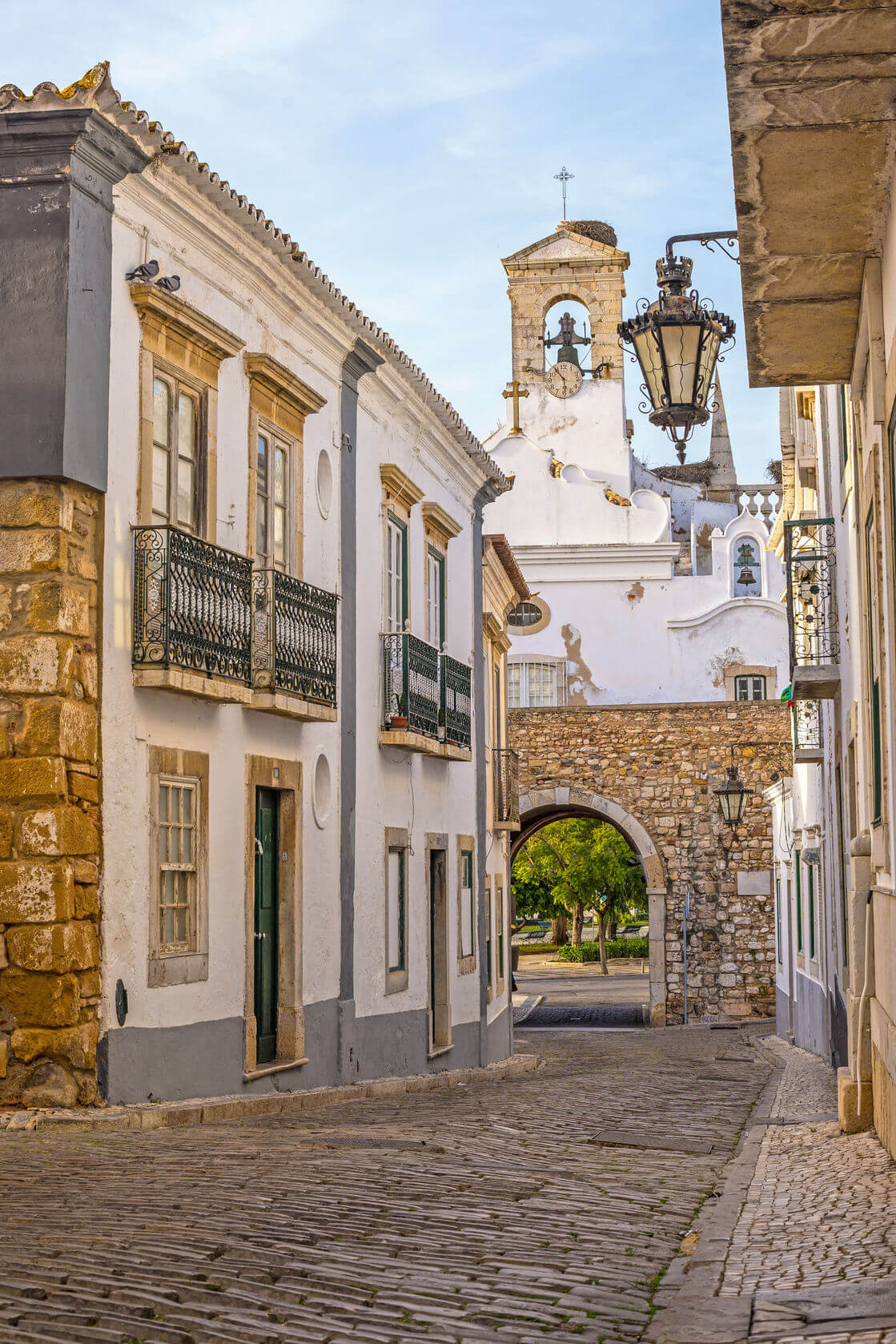
The old town, consisting of cobbled squares and winding streets, will plunge you into the atmosphere of medieval Portugal. There are not many people here, it is always calm and quiet. The air is filled with the scent of orange trees.
The area is surrounded by an oval-shaped fortress wall with three entrance gates, which was built over 100 years (X-XI centuries). During its existence, it has experienced three reconstructions, so it has been preserved only in fragments. Attached to this wall is the Castelo de Faro Castle, which has been standing here since the 19th century. He hadn’t changed much.
Behind the walls of the Old Town is the quiet Cathedral Square of Faro, whose main decorations are the seminary, founded in the 18th century, and the Bishop’s Palace, which serves as the residence of the bishops of the Algarve. The latter keeps a lot of paintings, manuscripts on theology and priceless folios.
Interesting fact! Stork nests are often seen on rooftops in the Old Town.
Location: Faro city center.
Cathedral of the Virgin – the main temple of the city
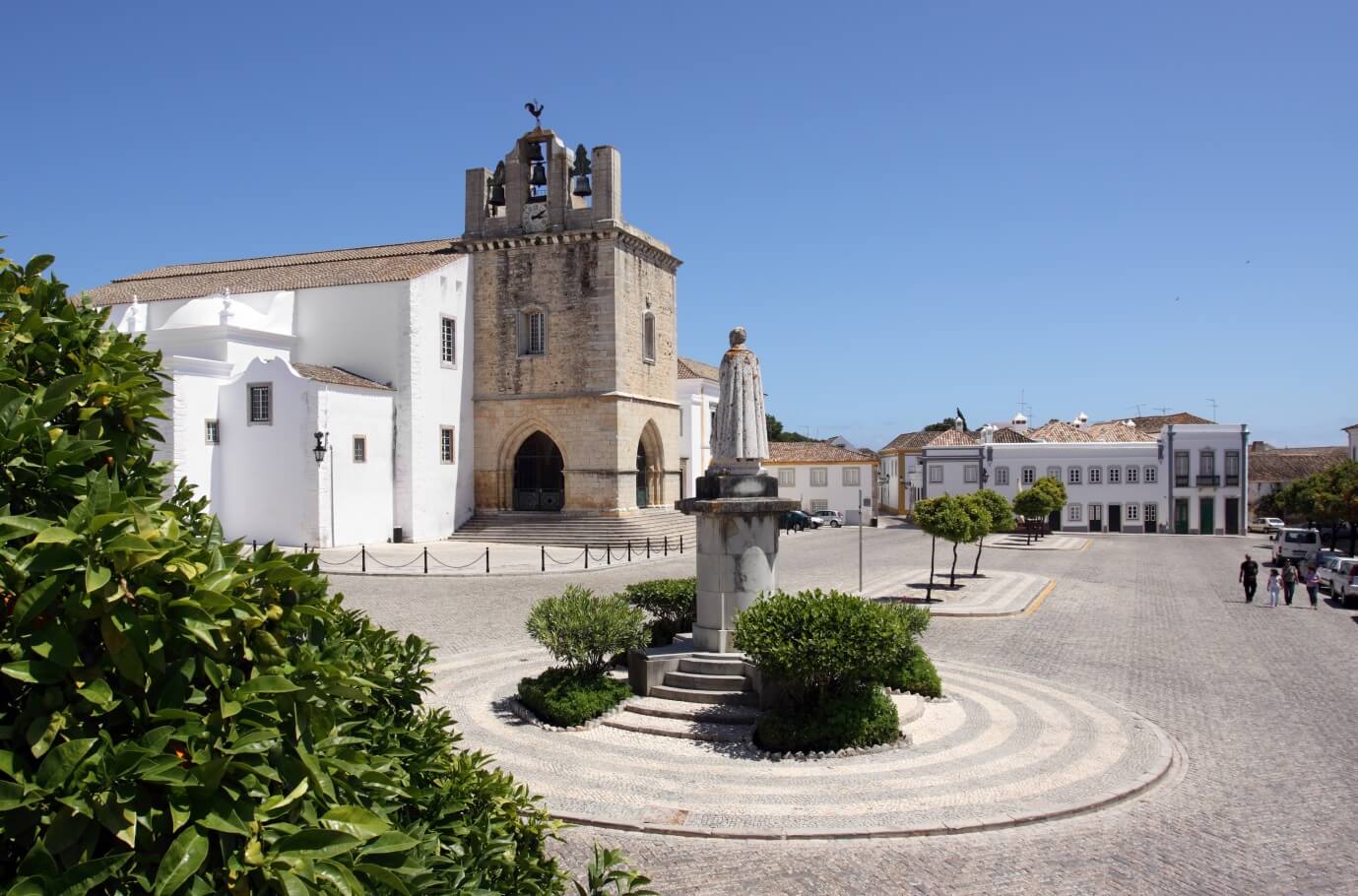
If you don’t know what to see in Faro, we recommend visiting the Cathedral, which is also called St. Mary’s Church. One of the most beautiful and most famous architectural objects is gathered on the main square in the heart of the Old Town. Surrounded by orange trees, it simply stuns with its ancient beauty.
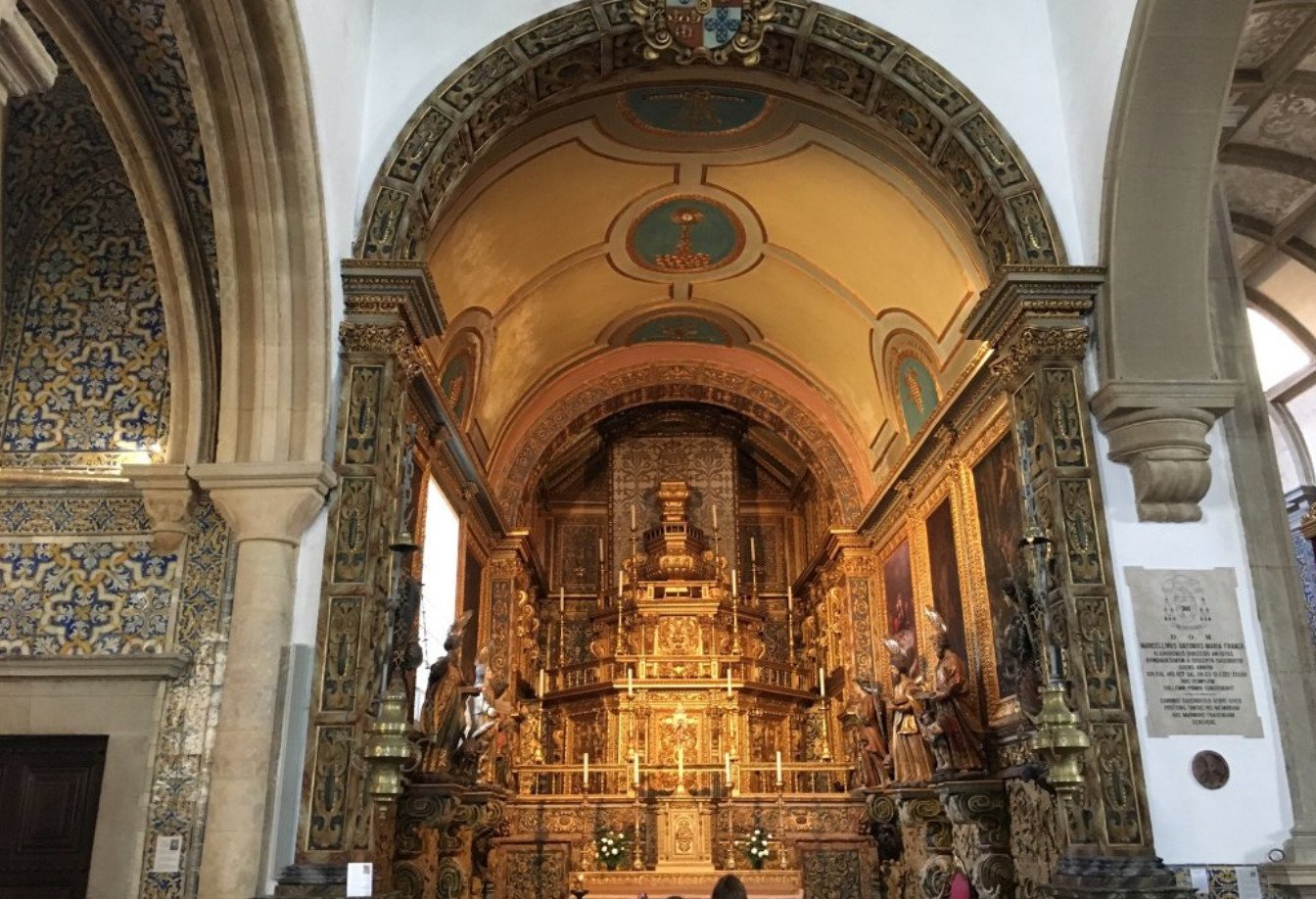
The history of this landmark began back in 1251, when the first Christians conquered Faro from the Arabs. Then a cathedral was built on the site of the mosque, which became a cathedral only after 300 long years. The architecture of the temple is a mixture of Gothic, Baroque and Renaissance. Unfortunately, after several reconstructions, only the bell tower, the main portico and the chapels remained from the unique building. By the way, one of the chapels is decorated with an original Baroque retablo. Inside, the church consists of three spacious naves, separated from each other by two majestic columns.
The main chapel of the attraction, as well as the side walls, are decorated with tiles from the 17th century. The organ that has been operating in this church since the 18th century has also been preserved.

On the roof of the Church of the Virgin Mary is the best viewing platform in Faro, which offers a wonderful view: you can look at the sea and the walled old town. Faro Cathedral is now listed on the Register of Monuments of national significance. Its building houses a collection of iconic works of art — vessels for communion, vestments of priests, figurines of saints in glass boxes and other expositions belonging to the Cathedral Museum.
In the courtyard of the cathedral you will see a unique chapel. Its peculiarity is that human bones, the most real ones, act as a decoration. Read more about this place below.
- Location: Largo da Se, Faro 8000-138, Portugal (Old Town center).
- Opening hours: 10: 00-17: 30, Saturday-9: 00-13: 00.
- The ticket price is 3.5 euros.
Eshtoi Palace-a pearl of architecture
The Estoy Palace is located near Faro. The spectacular building dates back to the mid-17th century and is decorated in a rare Rococo style and framed by antique columns. The idea to build a palace belonged to a local aristocrat, but he was not destined to see his masterpiece due to his imminent death. However, this idea was taken up by another rich man, who received the title of Viscount Ashtoy for his merits.
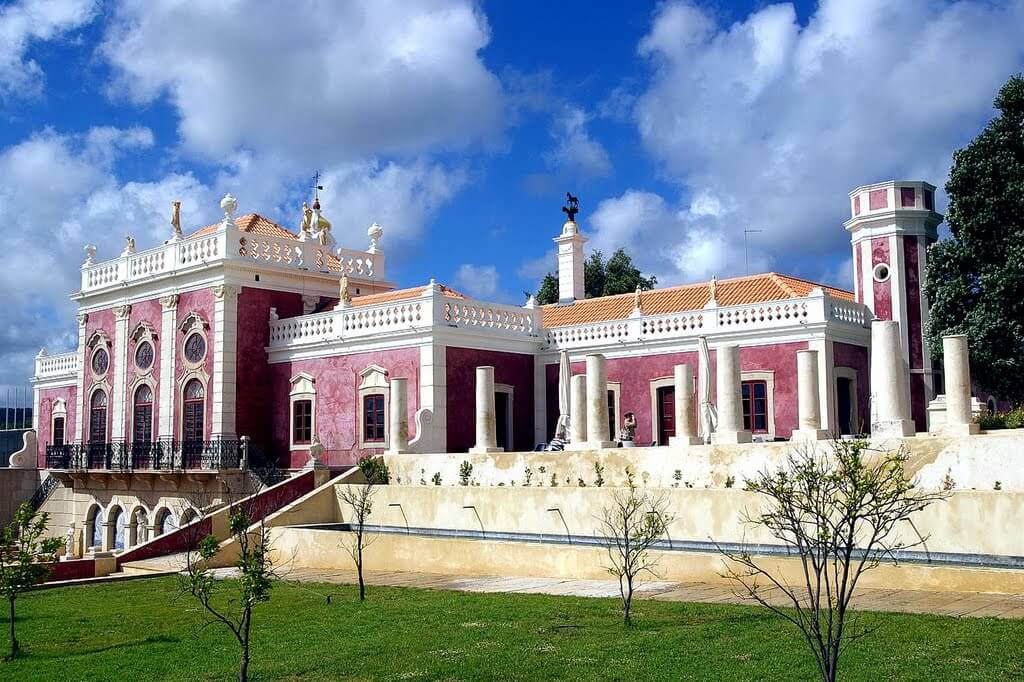
The castle, designed by Domingos da Silva Meira, is famous for its beautiful garden. In the lower terrace there is a white and blue pavilion with the best copy of the “Three Graces” by Antonio Canova and elegant sculptures carved from stone. But the upper terrace is decorated with fountains, niches, miniature pools with sparkling water and stained glass windows.
The decoration of the attraction is a real masterpiece! Inside you can see tiled panels, beautiful stucco molding, unique paintings, as well as a collection of antique furniture and interior items. The building is decorated with elegant reclining and sitting statues. Another special feature of the Palácio de Estoi is the wooden Roman baths made in the form of unusual fabulous fish.
- Since 2008, after reconstruction, Estoy has become an elite hotel. To get to its territory, you need to make an agreement with the staff. This is easy to do – the friendly staff of the hotel does not refuse, you do not need to pay for the entrance, as well as for parking.
- Location: Rua de Sao Jose (St. Jose Street).
- Website: www.pousadas.pt
Church of do Karmu-gold leaf temple
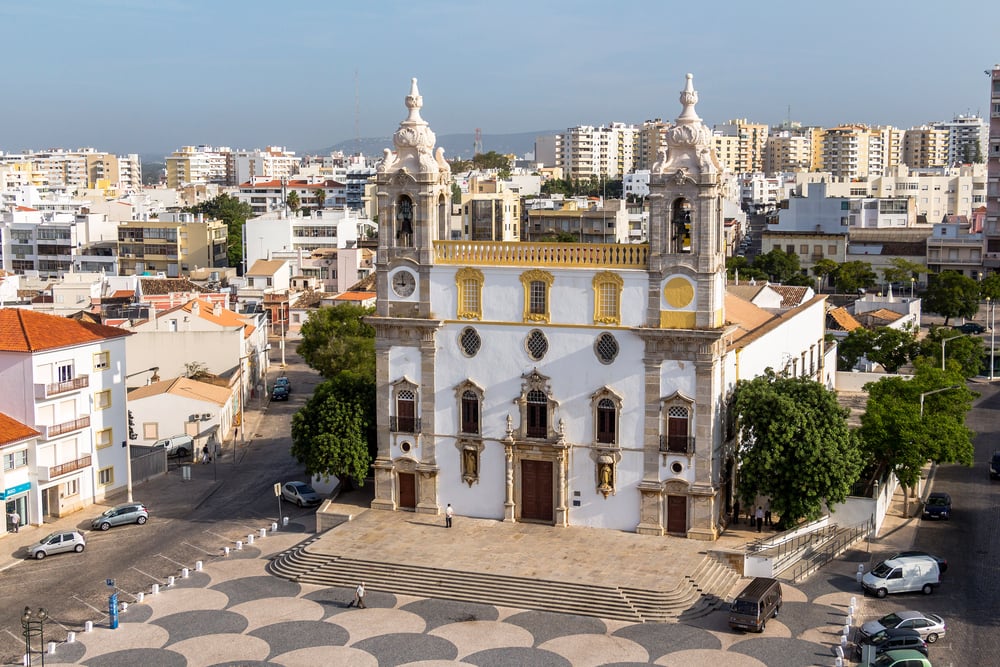
Built in the 18th century, Igreja da Ordem Terceira do Carmo is one of the most luxurious examples of late Baroque architecture in Portugal. With the Cathedral of the Carmelites, it represents an architectural ensemble. These two structures are united by the narrowest house in the world, which is only 1 meter wide.
The facade of the building is decorated with cornices and elegant fences. The walls on the sides are painted with bright azuleju images (tiles in white and blue tones), telling about the creation of the Carmelite Order.
The Third-order Cathedral of Karma has only one nave. It houses the main altar and 7 side chapels decorated with gilding. In the center of the hall are sculptures of Elijah and Elisha, the Biblical prophets. The rich interior decor and gold-plated wood inlay are striking.
The Carmo Church building is considered unique. This is not only one of the most beautiful city attractions, but also the best example of wooden architecture in Portugal. It is also called the Cathedral of the Carmelites or the Church of the 3rd Order of Our Lady of Mount Carmel.
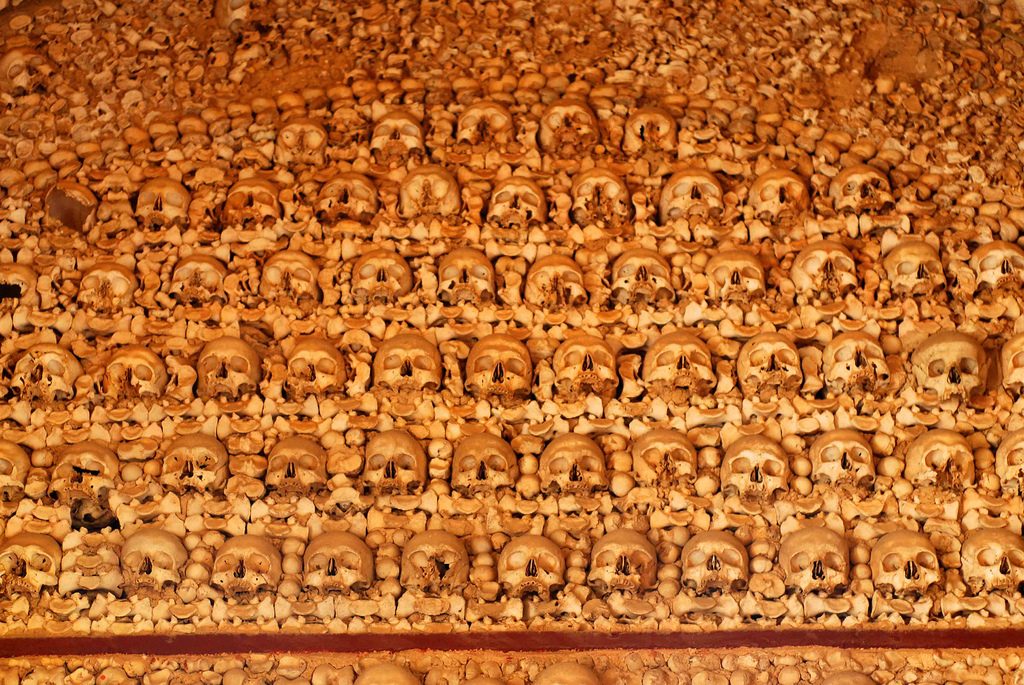
The interior of the Church of do Carmo is decorated with gold leaf, which is why it is often called Golden. Attention is drawn to the magnificent altar, sacristy, as well as an ancient organ made in the Baroque style.
But the most famous was the Osush Chapel, completed in 1826. It will be discussed further.
- Where to find a tourist attraction: Largo do Carmo (Square do Carmo).
- Open: on weekdays in winter-from 9: 00 to 17: 00, in summer – from 9: 00 to 18: 00, Sat-10: 00 -13: 00, Sun-closed.
- Entrance to the church is free, and to the chapel – 2 euros.
Chapel of Bones – a dark legacy of Faro
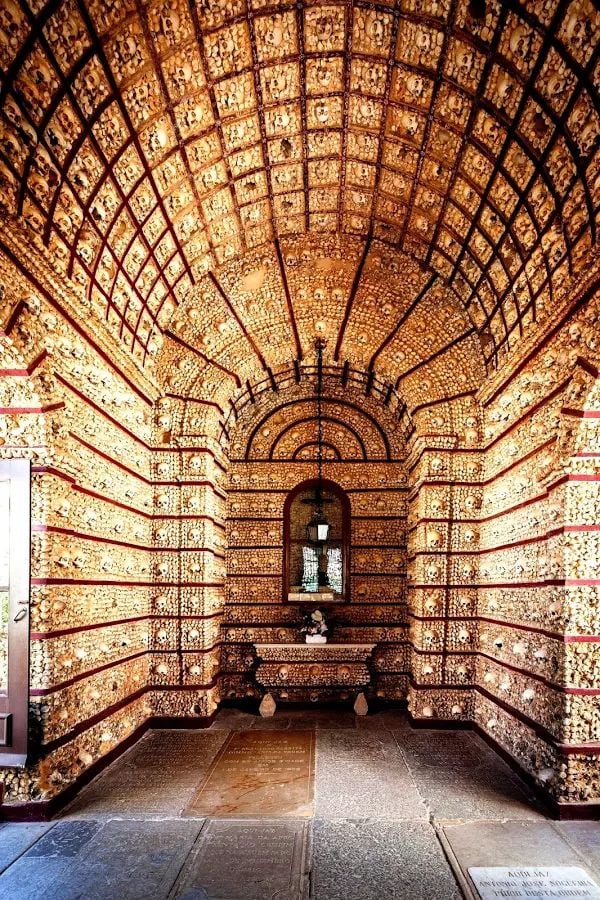
Built in the early 18th century, the Osos Chapel is one of Faro’s most visited attractions.
1250 whitewashed monk skulls and bones are embedded in the ceiling and walls of Capela dos Ossos.
The building itself consists of 3 huge naves with small windows, thanks to which they stay in semi-darkness even in the sunniest weather. The impression is dark and rather creepy-definitely not for the vulnerable and impressionable!
The author of this strange structure is a Franciscan monk, who decided to emphasize all the corruptibility of life with his creation. The entrance to the chapel is crowned with a sign with a warning phrase – ” Our bones are waiting for you.”
- Opening hours: from 10: 00 to 13: 00, and from 15: 00 to 17: 30, Sat-10: 00 -13: 00, Sun-non-working day.
- Official website: www.algarve-tourist.com/Faro/Cepela-dos-Ossos-faro.html.
Roman villa in Milreu-ruins that have become history
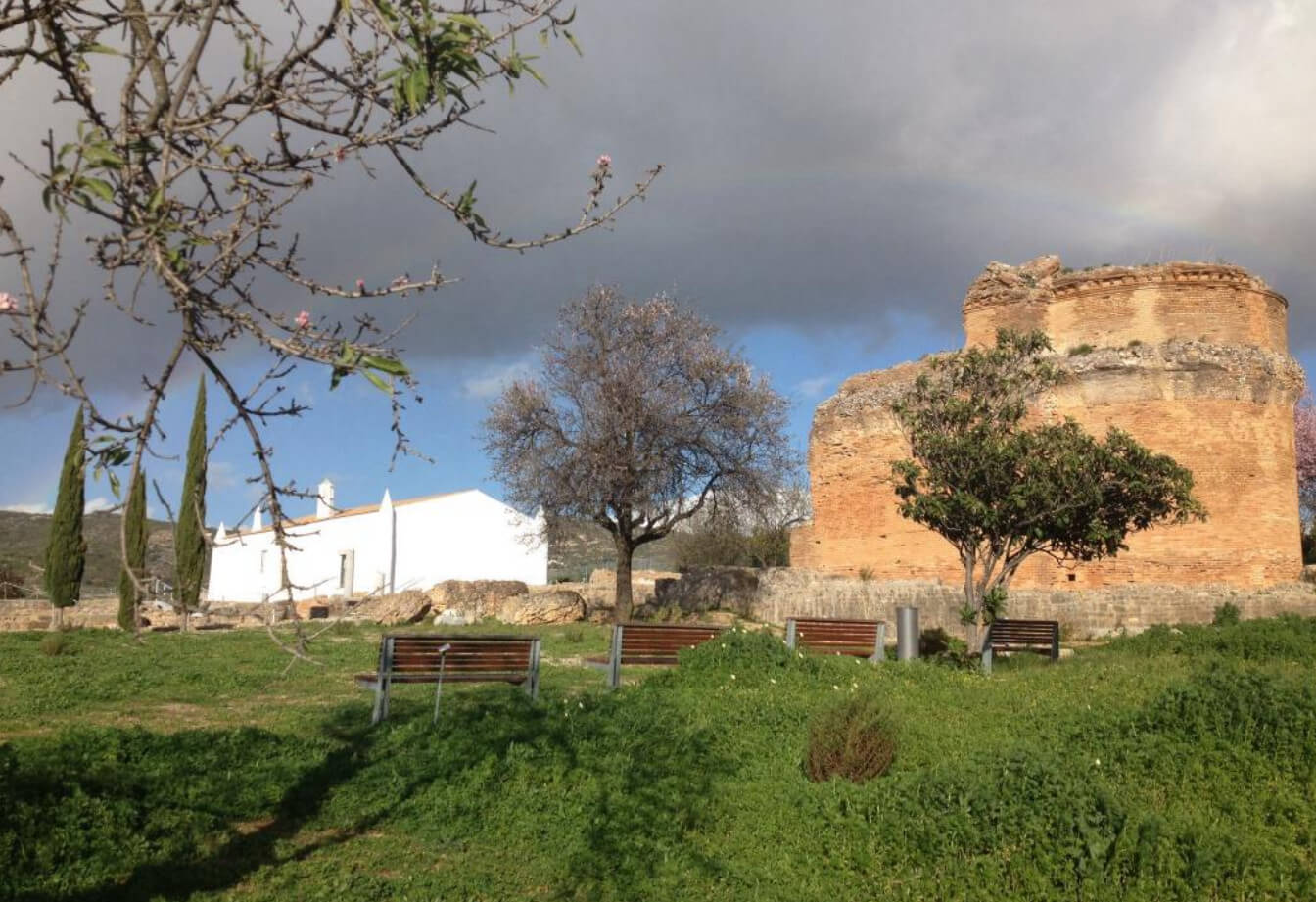
Some of Faro’s most famous attractions include the Nucleo Museologico da Villa Romana de Milreu. It is an ancient ruin located 8 km from Faro in the picturesque countryside. Here you can look at various ceramics, themed mosaics, marble coverings and other artifacts, as well as get acquainted with the life of the ancient Romans. The exact date of the foundation of the Roman Villa in Milreu is unknown-presumably it is the first or second century AD. In the IV century, it was rebuilt and continued to be used until about the VII century.
Only small fragments of a large manor house, a temple, agricultural buildings and baths have survived to this day.
The ruins of Villa Romana are considered a characteristic example of a villa with a peristyle. The open courtyard is surrounded on all sides by a covered colonnade. The patio adjacent to this gallery is dominated by decorative friezes with images of fish. The main motif in the interior is geometric, strict.
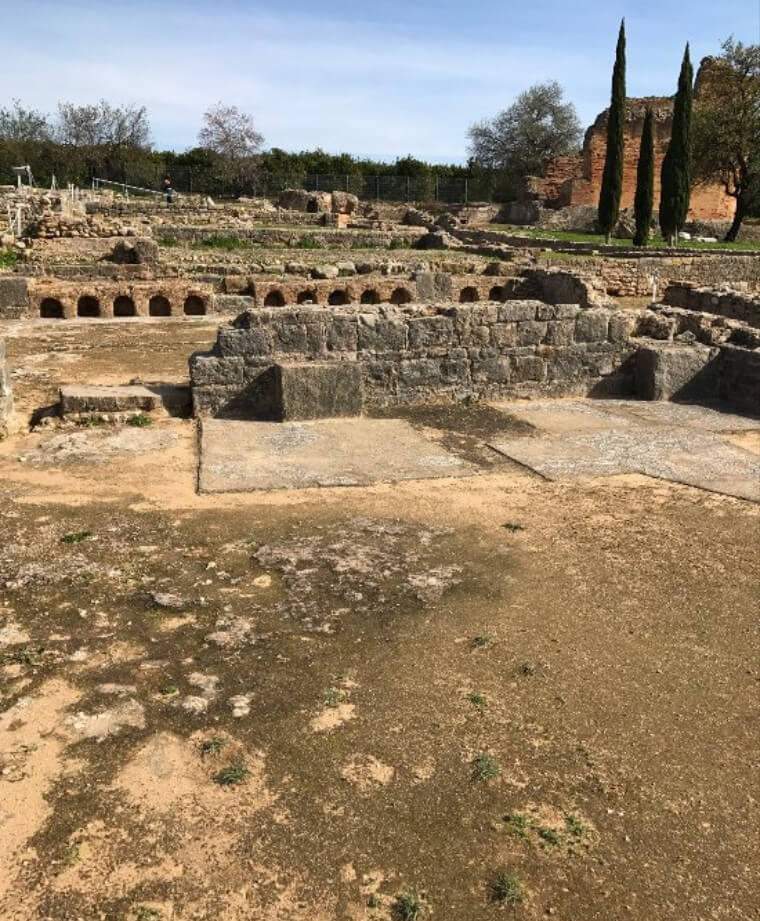
The dilapidated baths with apodyterium (changing room) and frigidarium (department in Roman thermal baths) are another evidence of the former luxury. They still have marble cold water baths, where the owners of the villa cooled off after a bath. Marble sculptures and an underground heating system are of great interest.
To the right of the main entrance is a water shrine dedicated to the cult of water. Once its interior was decorated with colorful marble tiles, and the exterior was decorated with mosaic drawings of fish. In the sixth century, the Romans converted the sanctuary into a church, adding a small mausoleum and a font for ablutions. The next transformation took place in the 8th century, when the church became a mosque. Another 200 years later, the building was almost destroyed in an earthquake. It was only in the 15th century that a farmhouse was built on the site of an ancient manor house, which has been preserved in Portugal to the present day.
- Location: Rua de Faro, Estoi (Via de Faro, Estoi).
- Opening hours: 10: 30-13: 00 and 14: 00-18: 30.
- The entrance fee is 2 euros.
Francisco Gomez Street-for recreation and walking
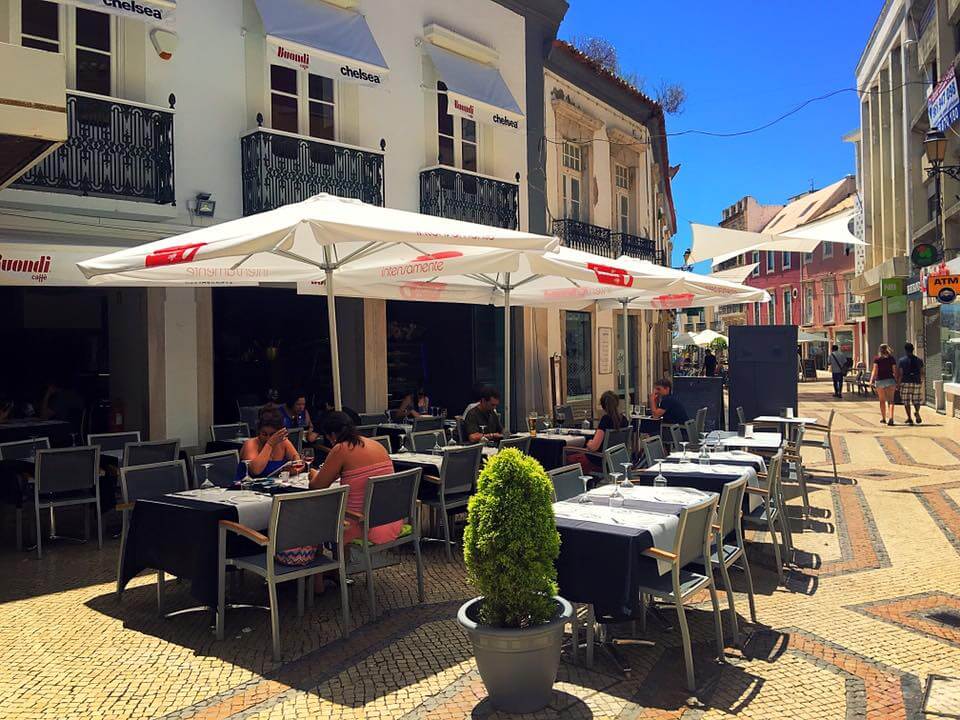
What else to see in Faro Portugal? Be sure to explore the beautiful Francisco Gomez street, located in the heart of the city. It is designed in a classic Portuguese style and is literally saturated with the atmosphere of relaxation and walking. Rua Dr. Francisco Gomes is paved with smooth stone or beautiful tiles and protected from the sun by a white fabric canopy. It is here that you will find fashion shops, souvenir shops, restaurants and cafes.
- Location: Rua Dr. Francisco Gomes (Francisco Gomes Street).
Arco da Vila-the main city gate
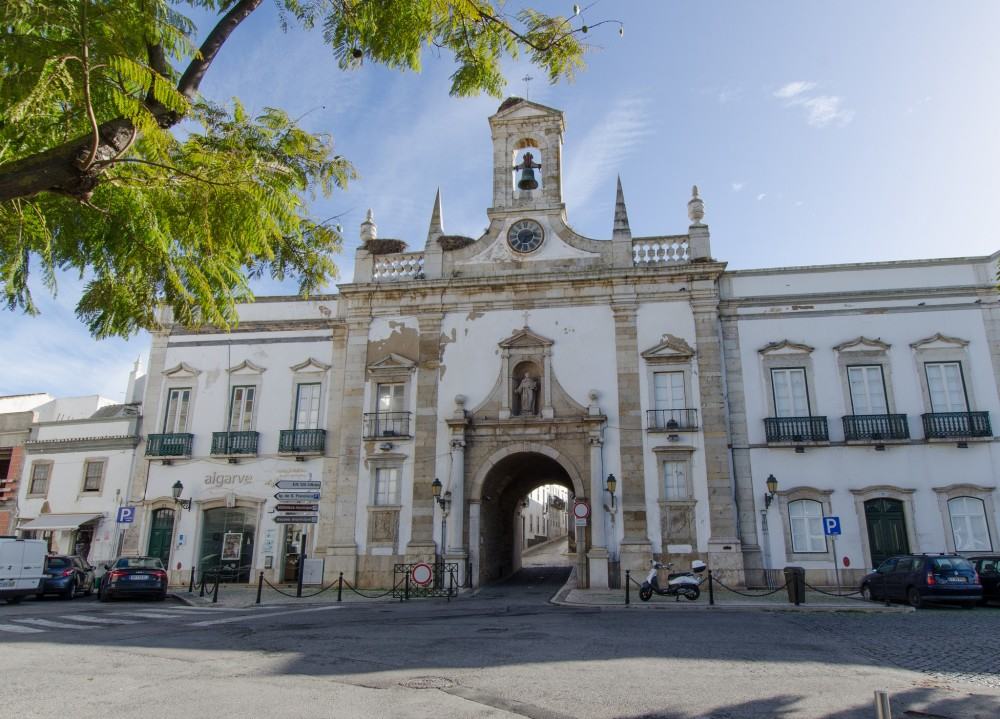
Above one of the three entrances to the historical part of the city stands the old neoclassical Arco da Vila, located two hundred meters from the Church of St. Mary the Virgin. It was built in 1812 on the instructions of the priest Francisco do Avelara. The author of this project is Francesco Fabri, a renowned architect from Genoa.
The arch has a rounded shape, the design of which is complemented by a statue of Thomas Aquinas, made of pure marble, and two ancient Greek columns. This ensemble is completed by a beautiful pediment that flows into the belfry. It is flanked by a clock and balusters, giving it a very noble appearance.
Now Arco da Vila is considered not only one of the main symbols of Faro, but also a favorite place of residence of local storks.
- Location: Rua da Misericordia (street of Mercy).
In Faro (Portugal), the sights are distinguished by their grandeur and unspoilt nature. They do not let you get bored and make tourists plunge into the atmosphere of antiquity and beauty.

